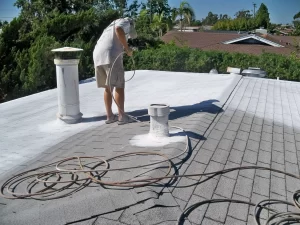What Makes Professional Paint Materials Different from Store-Bought Paint?
In my many years of experience as a professional painter, I’ve discovered vast differences in both the cost and performance of different paint products. Knowing the industry from an insider’s perspective is a great asset when it comes to product selection, as one product can succeed where the wrong one will fail completely.
The difference between professional-grade and consumer-grade materials isn’t just about price – it’s about performance, durability, and achieving results that last. Professional painters have access to specialized products and know exactly which materials work best for specific situations.
How Does Professional Technique Differ from DIY Painting?
The approach to the job differs greatly from a novice to a professional. A professional painter has encountered similar situations several times and has learned through trial and error and coaching how to succeed in challenging instances that would stump a homeowner.
Why Experience Matters in Paint Application
While preparation definitely affects the outcome, so do product selection and technique. There are seemingly unsurmountable obstacles that can easily be solved by an experienced professional. What appears impossible to a homeowner becomes routine for someone with proper training and experience.
How Do Professional Painters Match Existing Wall Colors?
Matching wall colors is one such instance where professional expertise is invaluable. It can be extremely tricky to achieve a successful match unless you have the original paint can and the sun hasn’t bleached out the paint on the wall.
Professional Color Matching Tools and Techniques
Professional painters have access to color-matching tools that can get pretty close to any existing color. However, even with the exact color and sheen available, there are still professional tricks that affect the outcome:
Slightly thinning the paint with water helps it blend in better, reducing the sheen on a shiny surface so it will perfectly assimilate and hiding brush marks where a wall has been previously rolled.
Advanced Blending Techniques
- Stippling the brush versus using strokes further helps achieve seamless blending
- Sometimes, spraying with a conventional sprayer is the only way to perfectly blend touch-ups
- Most homeowners haven’t the equipment or even a clue as to how to approach these matters
Why Do Cabinet Painting Projects Require Professional Expertise?
When it comes to painting cabinets key factors used by most homeowners will ruin their cabinets beyond repair by attempting to do the work themselves with a brush and roller. The best intentions in the world will fail them in light of the delicate nature of the project, where adhesion, flow, and luster need to be applied with only the right technique and preparation.
Critical Cabinet Painting Considerations
Sanding cabinets, if done too aggressively, can expose the cheap wood under a veneer and leave dust that needs to be removed with a tack cloth. Some de-glossers can do a better job than aggressive sanding.
Professional Cabinet Painting Materials
- Primers can be too thick and affect the final look negatively
- Alkyd-acrylic paints made just for cabinet work provide superior results
- Professional painters often enhance these specialized paints with proven additives to augment adhesion
- These jobs usually command the highest prices due to their specialized nature
How Do Professionals Handle Water Stains on Ceilings?
Even removing water stains from a ceiling can be a cinch for a professional and an unsurmountable task for a homeowner. The minerals in water leave ugly brown marks, and even repainting with appropriate paint will not hide them.
Professional Water Stain Removal Process
It takes proper priming and application to hide even brush and roller marks, plus the need to cover everything underneath. A professional can accomplish the task in under ten minutes by covering the floor and spraying the right mixture of water with bleach in it, while a homeowner might struggle for hours with poor results.
What Specialized Equipment Do Professional Painters Use?
Professional painters invest in specialized equipment that delivers superior results:
- Conventional sprayers for seamless blending and cabinet work
- Color-matching technology for precise color reproduction
- Professional-grade brushes and rollers designed for specific applications
- Specialized primers and additives not available to consumers
Why Is Professional Preparation More Effective?
Professional preparation goes beyond what most homeowners understand:
- Proper surface assessment to choose the right approach
- Selective sanding techniques that prepare without damaging
- Advanced cleaning methods including tack cloth application
- Strategic priming with the right products for each situation
What’s the True Cost of DIY vs. Professional Painting?
While DIY painting might seem cost-effective, the reality is different:
- Ruined materials from improper technique
- Time investment that professionals complete in minutes
- Subpar results that require professional correction
- Potential damage to surfaces from inexperienced handling
How Do You Choose the Right Professional Painter?
Look for painters who demonstrate:
- Industry insider knowledge of materials and techniques
- Specialized equipment for different applications
- Experience with challenging situations like color matching and cabinet work
- Understanding of advanced techniques beyond basic brush and roller application
Ready for Professional Results?
Professional painting isn’t just about having the right tools – it’s about combining high-quality materials with proven techniques developed through years of experience. When you need results that last and look flawless, professional expertise makes all the difference.
Contact us to discuss how professional-grade materials and expert techniques can transform your painting project from a potential disaster into a stunning success.


